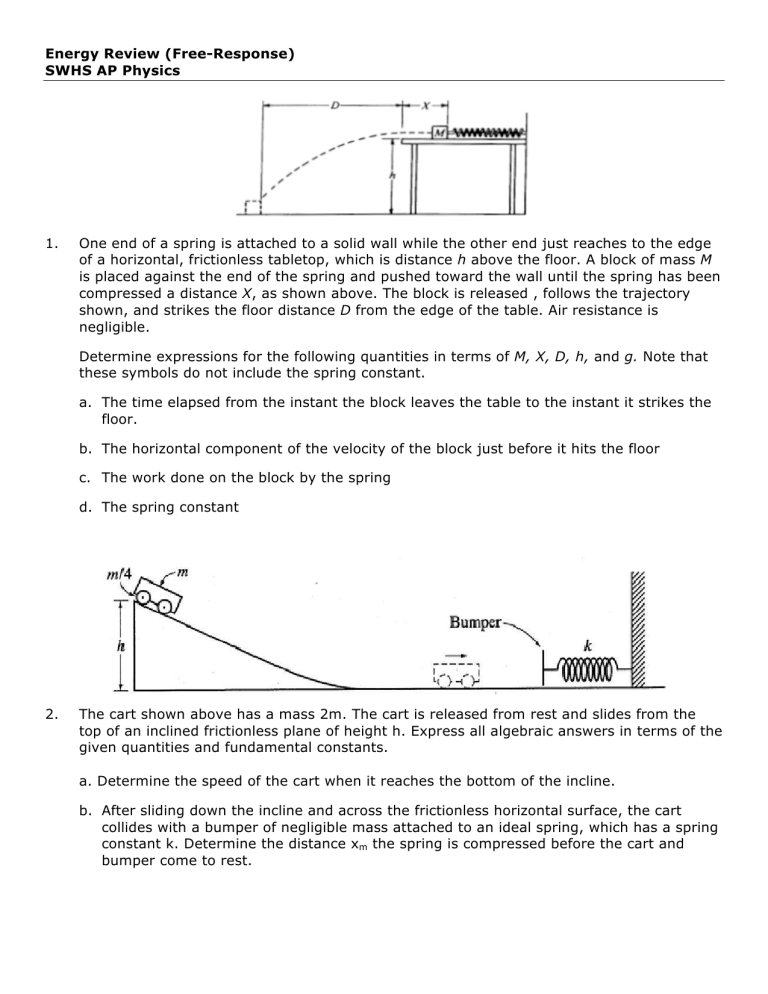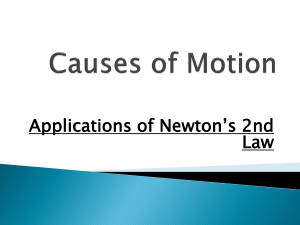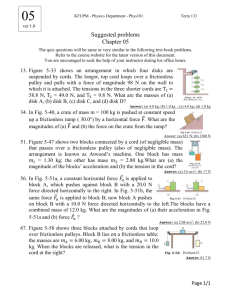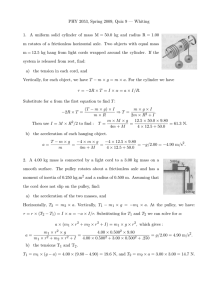
Energy Review (Free-Response) SWHS AP Physics 1. One end of a spring is attached to a solid wall while the other end just reaches to the edge of a horizontal, frictionless tabletop, which is distance h above the floor. A block of mass M is placed against the end of the spring and pushed toward the wall until the spring has been compressed a distance X, as shown above. The block is released , follows the trajectory shown, and strikes the floor distance D from the edge of the table. Air resistance is negligible. Determine expressions for the following quantities in terms of M, X, D, h, and g. Note that these symbols do not include the spring constant. a. The time elapsed from the instant the block leaves the table to the instant it strikes the floor. b. The horizontal component of the velocity of the block just before it hits the floor c. The work done on the block by the spring d. The spring constant 2. The cart shown above has a mass 2m. The cart is released from rest and slides from the top of an inclined frictionless plane of height h. Express all algebraic answers in terms of the given quantities and fundamental constants. a. Determine the speed of the cart when it reaches the bottom of the incline. b. After sliding down the incline and across the frictionless horizontal surface, the cart collides with a bumper of negligible mass attached to an ideal spring, which has a spring constant k. Determine the distance xm the spring is compressed before the cart and bumper come to rest. 3. In an experiment to determine the spring constant of an elastic cord of length 0.60 m, a student hangs the cord from a rod as represented above and then attaches a variety of weights to the cord. For each weight, the student allows the weight to hang in equilibrium and then measures the entire length of the cord. The data are recorded in the table below: a. Use the data to plot a graph of weight versus length on the axes below. Sketch a best-fit straight line through the data. b. Use the best-fit line you sketched in part (a) to determine an experimental value for the spring constant k of the cord. The student now attaches an object of unknown mass m to the cord and holds the object adjacent to the point at which the top of the cord is tied to the rod, as shown to the left. When the object is released from rest, it falls 1.5 m before stopping and turning around. Assume that air resistance is negligible. c. Calculate the value of the unknown mass m of the object. d. i.. Determine the magnitude of the force in the cord when the when the mass reaches the equilibrium position. ii. Determine the amount the cord has stretched when the mass reaches the equilibrium position. 4. A 0.1 kilogram block is released from rest at point A as shown above, a vertical distance h above the ground. It slides down an inclined track, around a circular loop of radius 0.5 meter, then up another incline that forms an angle of 30° with the horizontal. The block slides off the track with a speed of 4 m/s at point C, which is a height of 0.5 meter above the ground. Assume the entire track to be frictionless and air resistance to be negligible. a. Determine the height h. b. On the figure below, draw and label all the forces acting on the block when it is at point B. which is 0.5 meter above the ground. c. Determine the magnitude of the velocity of the block when it is at point B. d. Determine the magnitude of the force exerted by the track on the block when it is at point B. e. Determine the maximum height above the ground attained by the block after it leaves the track. f. Another track that has the same configuration, but is NOT frictionless, is used. With this track it is found that if the block is to reach point C with a speed of 4 m/s, the height h must be 2 meters. Determine the work done by the frictional force. Solutions: 1. 2. 3. 4.



